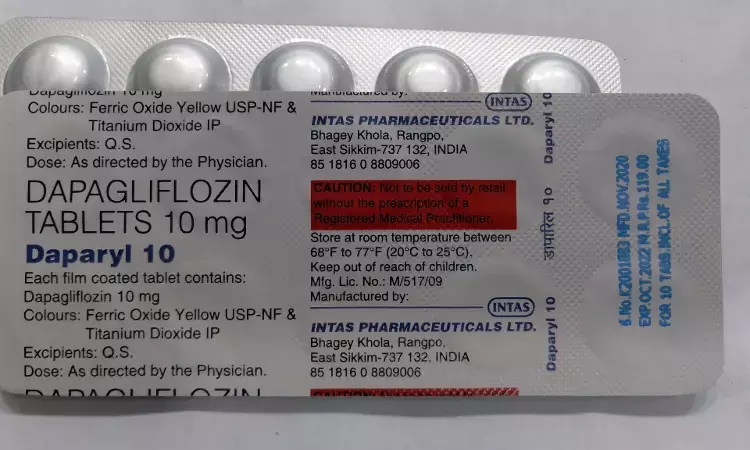- Home
- Medical news & Guidelines
- Anesthesiology
- Cardiology and CTVS
- Critical Care
- Dentistry
- Dermatology
- Diabetes and Endocrinology
- ENT
- Gastroenterology
- Medicine
- Nephrology
- Neurology
- Obstretics-Gynaecology
- Oncology
- Ophthalmology
- Orthopaedics
- Pediatrics-Neonatology
- Psychiatry
- Pulmonology
- Radiology
- Surgery
- Urology
- Laboratory Medicine
- Diet
- Nursing
- Paramedical
- Physiotherapy
- Health news
- Fact Check
- Bone Health Fact Check
- Brain Health Fact Check
- Cancer Related Fact Check
- Child Care Fact Check
- Dental and oral health fact check
- Diabetes and metabolic health fact check
- Diet and Nutrition Fact Check
- Eye and ENT Care Fact Check
- Fitness fact check
- Gut health fact check
- Heart health fact check
- Kidney health fact check
- Medical education fact check
- Men's health fact check
- Respiratory fact check
- Skin and hair care fact check
- Vaccine and Immunization fact check
- Women's health fact check
- AYUSH
- State News
- Andaman and Nicobar Islands
- Andhra Pradesh
- Arunachal Pradesh
- Assam
- Bihar
- Chandigarh
- Chattisgarh
- Dadra and Nagar Haveli
- Daman and Diu
- Delhi
- Goa
- Gujarat
- Haryana
- Himachal Pradesh
- Jammu & Kashmir
- Jharkhand
- Karnataka
- Kerala
- Ladakh
- Lakshadweep
- Madhya Pradesh
- Maharashtra
- Manipur
- Meghalaya
- Mizoram
- Nagaland
- Odisha
- Puducherry
- Punjab
- Rajasthan
- Sikkim
- Tamil Nadu
- Telangana
- Tripura
- Uttar Pradesh
- Uttrakhand
- West Bengal
- Medical Education
- Industry
Dapagliflozin appears beneficial at various levels of Heart Failure in HFrEF patients: Study

Dapagliflozin appears beneficial at various levels of Heart Failure with Reduced Ejection Fraction, according to a study published in the Circulation.
Circulating high-sensitivity cardiac troponin T (hsTnT) predominantly reflects myocardial injury, and higher levels are associated with a higher risk of worsening heart failure (HF) and death in patients with HF with reduced ejection fraction (HFrEF). Less is known about the prognostic significance of changes in hsTnT over time, the effects of dapagliflozin on clinical outcomes in relation to baseline hsTnT levels, and the effect of dapagliflozin on hsTnT levels.
DAPA-HF was a randomized, double-blind, placebo-controlled trial of dapagliflozin (10 mg daily) in patients with NYHA class II-IV symptoms and left ventricular ejection fraction ≤40% (median follow-up = 18.2 months). hsTnT (Roche Diagnostics) was measured at baseline in 3,112 patients and at 1 year in 2,506 patients. The primary endpoint was adjudicated worsening HF or cardiovascular death. Clinical endpoints were analyzed according to baseline hsTnT and change in hsTnT from baseline to 1 year. Comparative treatment effects on clinical endpoints with dapagliflozin vs. placebo were assessed by baseline hsTnT. The effect of dapagliflozin on hsTnT was explored.
The Results of the study are as follows:
Median baseline hsTnT concentration was 20.0 (25th-75th percentile, 13.7 to 30.2) ng/L. Over 1 year, 67.9% of patients had a ≥10% relative increase or decrease in hsTnT concentrations, and 43.5% had a ≥20% relative change. A stepwise gradient of higher risk for the primary endpoint was observed across increasing quartiles of baseline hsTnT concentration (adjusted hazard ratio [aHR] Q4 vs. Q1, 5.10; 95% CI, 3.67-7.08). Relative and absolute increases in hsTnT over 1 year were associated with a higher subsequent risk of the primary endpoint. The relative reduction in the primary endpoint with dapagliflozin was consistent across quartiles of baseline hsTnT (p-interaction = 0.55), but patients in the top quartile tended to have the greatest absolute risk reduction (absolute risk difference, 7.5%; 95% CI, 1.0% - 14.0%). Dapagliflozin tended to attenuate the increase in hsTnT over time compared to placebo (relative least-squares mean reduction, -3% [-6% to 0%]; p=0.076).
Thus, the researchers concluded that higher baseline hsTnT and greater increase in hsTnT over 1 year are associated with worse clinical outcomes. Dapagliflozin consistently reduced the risk of the primary endpoint, irrespective of baseline hsTnT levels.
Reference:
Serial Assessment of High-Sensitivity Cardiac Troponin and the Effect of Dapagliflozin in Patients with Heart Failure with Reduced Ejection Fraction: An Analysis of the DAPA-HF Trial by Berg DD et al. published in the Circulation.
DOI: 10.1161/CIRCULATIONAHA.121.057852
Dr. Shravani Dali has completed her BDS from Pravara institute of medical sciences, loni. Following which she extensively worked in the healthcare sector for 2+ years. She has been actively involved in writing blogs in field of health and wellness. Currently she is pursuing her Masters of public health-health administration from Tata institute of social sciences. She can be contacted at editorial@medicaldialogues.in.
Dr Kamal Kant Kohli-MBBS, DTCD- a chest specialist with more than 30 years of practice and a flair for writing clinical articles, Dr Kamal Kant Kohli joined Medical Dialogues as a Chief Editor of Medical News. Besides writing articles, as an editor, he proofreads and verifies all the medical content published on Medical Dialogues including those coming from journals, studies,medical conferences,guidelines etc. Email: drkohli@medicaldialogues.in. Contact no. 011-43720751


